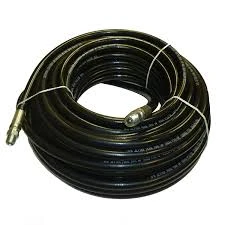Air Conditioning Duct Systems for Efficient Climate Control Solutions
Understanding Air Conditioning Ducting Pipes
Air conditioning systems play a crucial role in maintaining comfortable indoor climates, especially in regions with extreme weather conditions. One of the primary components of these systems is the ducting pipe, which is essential for the efficient distribution of conditioned air throughout residential and commercial spaces. In this article, we’ll dive into the function, types, installation, and maintenance of air conditioning ducting pipes.
Function of Ducting Pipes
Ducting pipes serve as the network through which cooled or heated air is transported from the HVAC system to the various rooms in a building. They are integral to the system’s overall performance as they facilitate proper airflow, which is essential for effective heating and cooling. A well-designed ducting system can enhance energy efficiency, boost comfort levels, and improve indoor air quality.
Types of Ducting Pipes
There are several types of ducting pipes commonly used in air conditioning systems, each with specific advantages and applications
1. Flexible Ducts Made from internal wire and insulated with fiberglass, flexible ducts are easy to install and adjust. They are particularly useful in tight spaces and can navigate complex layouts.
2. Rigid Ducts Typically constructed from galvanized steel, aluminum, or fiberglass, rigid ducts are more durable and provide superior airflow. They are often used in commercial applications where long runs of ductwork are required.
air conditioning ducting pipe

3. Semi-Rigid Ducts These ducts offer a compromise between flexible and rigid ducts. They are constructed from a combination of materials, such as aluminum and plastic, providing both durability and flexibility.
4. Sheet Metal Ducts Made from thin sheets of metal, these ducts are favored for their longevity and efficiency. They are primarily used in commercial applications where fire resistance is a priority, and they can be customized to fit specific architectural designs.
Installation of Ducting Pipes
Proper installation of ducting pipes is critical to the system’s efficiency. A well-planned layout should minimize sharp bends, which can impede airflow and reduce efficiency. The ducts should be insulated to prevent energy losses, especially when transferring air through unconditioned spaces like attics or garages. Additionally, the size of the ducts must correspond to the volume of air the system needs to deliver; undersized ducts can lead to poor performance and increased energy consumption.
Maintenance of Ducting Pipes
Maintaining ducting pipes is integral to the overall performance of the air conditioning system. Regular inspections should be conducted to check for leaks, which can lead to significant energy losses. Sealing any gaps with appropriate duct tape or mastic sealant is vital for efficiency. Moreover, ducts should be cleaned periodically to remove dust, mold, and other debris that can compromise air quality and circulation.
Conclusion
Air conditioning ducting pipes are a fundamental component of HVAC systems. Their design, installation, and maintenance directly impact the effectiveness of climate control in buildings. Understanding the different types of ducting available and the importance of proper upkeep can help homeowners and businesses achieve optimal indoor comfort and energy efficiency. As technology advances, we can expect to see innovations in ducting materials and designs that will further improve the efficiency and functionality of air conditioning systems in the years to come.
-
Ultimate Spiral Protection for Hoses & CablesNewsJun.26,2025
-
The Ultimate Quick-Connect Solutions for Every NeedNewsJun.26,2025
-
SAE J1401 Brake Hose: Reliable Choice for Safe BrakingNewsJun.26,2025
-
Reliable J2064 A/C Hoses for Real-World Cooling NeedsNewsJun.26,2025
-
Heavy-Duty Sewer Jetting Hoses Built to LastNewsJun.26,2025
-
Fix Power Steering Tube Leaks Fast – Durable & Affordable SolutionNewsJun.26,2025

